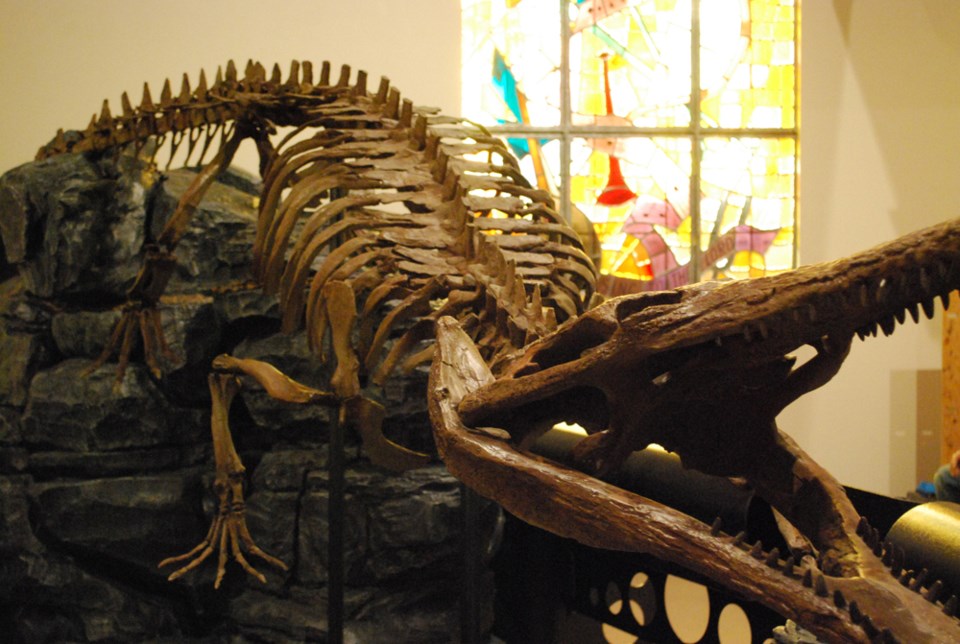Humboldt and District Museum got a taste of the cretaceous period through the Royal Saskatchewan Museum.
Their 92 million year old Terminonaris Robusta crocodile skeleton, Big Bert, started its tour back in 2014 and will be travelling around Saskatchewan until 2018.
For now, his temporary home will be in the Humboldt Museum until September.
The six metre long Big Bert, who is the most complete crocodile skeleton found worldwide, was found around the Carrot River area.
The person who found Big Bert is Dickson Hardie. He was not a paleontologist but loved to go digging around his farm where he found hundreds of marine fossils, like turtle shells, fish fossils, and sharks teeth, says Snall.
Tim Tokaryk was the paleontologist who helped dig up Big Bert. He will be coming for a reception in Humboldt in May.
Evidence suggests that he is a fish eater with his narrow jaw, just like his ancestor the Gavial Crocodiles in India and Nepal and unlike the alligators that we are used to seeing in places like Florida, says Marlon Janzen, senior exhibit designer who designed the exhibit for Big Bert.
“The idea is, with these very narrow jaws, it would allow him to snap them or clamp them together quite quickly chasing smaller prey like fish,” says Janzen.
The majority of North America and Saskatchewan was covered by an inland sea at the time of Big Bert, says Snall, so paleontologists and fossil enthusiasts are finding lots of marine fossils in digs all around Saskatchewan, some of which are on display with Big Bert.
One of these marine creatures also snacked on Big Bert. A shark tooth was found embedded in Bert’s rib, which paleontologists believe was from scavenging after he died.
This says something about the marine world Bert lived in, says Janzen.
The southwest corner of the province is rich with fossils finds, including Scotty the T-Rex was found around Eastend and the Kyle Mammoth.




